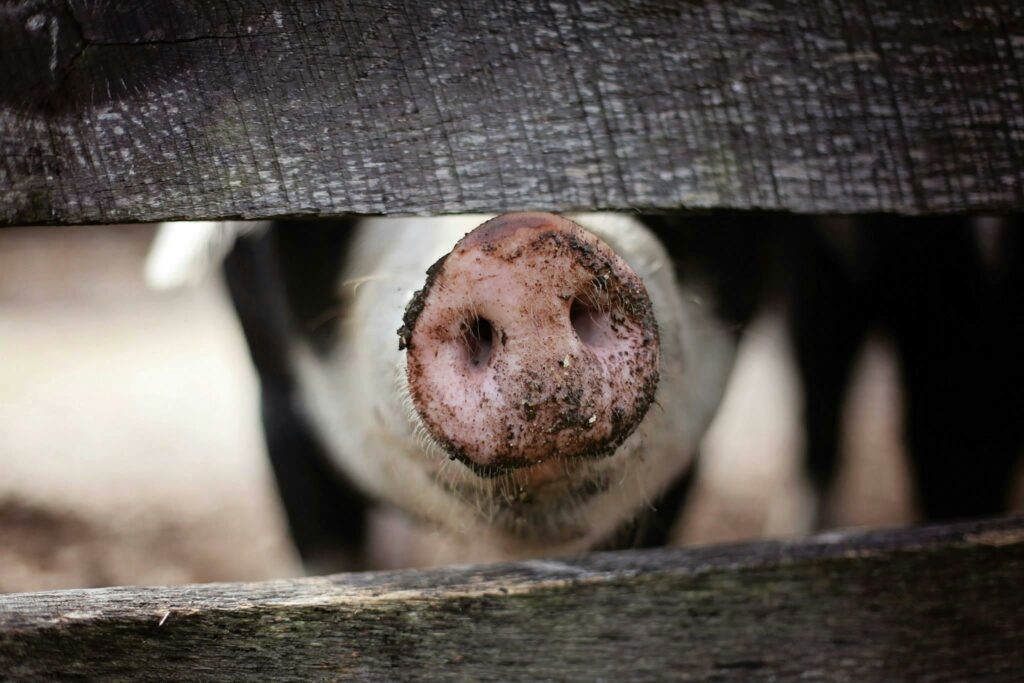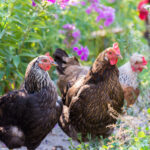Your cart is currently empty!
Spring Homesteading Chores: What to Do to Prepare for a Successful Year
Spring is one of the busiest and most exciting times on the homestead. As the days get longer and the temperatures rise, it’s time to shake off winter and start preparing for a productive year ahead. From garden prep to livestock care, here’s a quick checklist to help you get your homestead in top shape this spring.
Garden Preparation
A thriving garden starts with proper planning and preparation. Spring is the perfect time to assess your gardening strategy and lay the groundwork for a bountiful harvest.
- Assess & Plan: Review last year’s garden layout and adjust your plans based on what worked and what didn’t. Consider crop rotation to prevent soil depletion and pest issues.
- Start Seeds Indoors: Get a head start on crops like tomatoes, peppers, and herbs by starting seeds inside. Use grow lights and heating mats to ensure strong seedlings.
- Prepare Garden Beds: Remove weeds, add compost, and test soil pH to ensure healthy plant growth. If needed, amend soil with organic matter, such as aged manure or worm castings.
- Set Up Irrigation: Check hoses, rain barrels, and drip irrigation systems for leaks or blockages. Installing a timed irrigation system can save time and conserve water.
- Prune Trees & Shrubs: Trim back dead branches and shape fruit trees to encourage healthy growth. Apply organic mulch around trees to retain moisture and suppress weeds.
- Build or Repair Raised Beds: If you use raised beds, check for any repairs needed and replenish soil as necessary.
- Plan for Companion Planting: Strategically plant crops that benefit each other, such as tomatoes and basil, to improve growth and reduce pest problems.
Livestock & Animal Care
Ensuring your animals are healthy and their environments are clean and secure is crucial for a successful homestead.
- Health Checks: Inspect all animals for signs of illness, parasites, or injury. Schedule vet visits for vaccinations, hoof trims and check-ups if needed.
- Clean & Disinfect Housing: Deep clean chicken coops, barns, and shelters to prevent disease. Replace old bedding and ensure proper ventilation to reduce respiratory issues.
- Check Fencing: Repair or reinforce fences and enclosures to keep livestock safe from predators and escape attempts. Inspect gates and latches to ensure they are secure.
- Increase Egg Production: Provide supplemental calcium, fresh water, and longer daylight hours to boost laying hens’ productivity. Consider installing artificial lighting to extend daylight hours.
- Breed Planning: If raising livestock, determine breeding schedules for optimal timing. Research genetics and breeding practices to enhance herd quality.
- Prepare for New Arrivals: If expecting new livestock births, set up birthing areas and gather necessary supplies like heat lamps, bottles, and milk replacers.
- Stock Up on Feed & Supplements: Ensure you have adequate food supplies for the season and consider supplementing with fresh forage options as pastures start growing.
- Monitor for Parasites: Warmer weather means increased parasite activity. Establish a deworming and parasite control routine.
Soil & Pasture Management
Good soil and pasture management are key to keeping plants and animals healthy throughout the year.
- Rotate Pastures: Prevent overgrazing by rotating livestock and reseeding pastures if needed. Consider planting legumes to enrich soil nutrients and improve forage quality.
- Improve Soil Health: Apply compost, manure, or natural fertilizers to replenish soil nutrients. Implement cover crops to prevent erosion and improve fertility.
- Mulch & Weed Control: Suppress weeds early by applying mulch around garden beds and trees. Use natural weed barriers like straw, wood chips, or cardboard.
- Check for Erosion: Address any winter damage to soil and take steps to prevent runoff. Create swales or terraces for better water retention.
- Test Soil Nutrients: A soil test can reveal deficiencies and help guide proper amendments for optimal plant growth.
Infrastructure & Equipment Maintenance
Maintaining and upgrading homestead infrastructure will save time and prevent problems later in the year.
- Inspect & Repair Tools: Sharpen blades, oil hinges, and replace broken handles on essential tools. Properly store tools to prevent rust and damage.
- Prepare Machinery: Service tractors, tillers, and mowers to ensure smooth operation. Change oil, check filters, and replace worn-out belts.
- Stock Up on Supplies: Inventory seeds, feed, medicine, and other necessities before the season gets too busy. Consider bulk purchasing to save costs.
- Clean Water Systems: Flush out rain barrels, check wells, and clean troughs for fresh water. Ensure proper filtration systems are in place.
- Build & Improve Structures: Repair or build new garden beds, animal shelters, or fencing as needed. Evaluate barn space for efficient organization.
- Check Solar Panels & Renewable Energy Systems: If using alternative energy, ensure that panels, batteries, and connections are functioning properly.
Food Production & Preservation Planning
Making a plan for food production now will ensure a steady supply throughout the year.
- Plan Food Storage: Take inventory of preserved food from last year and plan what to grow for long-term storage. Rotate older items to avoid waste.
- Expand Your Garden: Consider adding new crops, fruit trees, or perennial plants. Research heirloom varieties for better resilience and unique flavors.
- Start Beekeeping or Expand Hives: If keeping bees, check hive health and prepare for swarming season. Provide adequate food sources for pollinators.
- Set Up a Greenhouse or Cold Frames: Extend your growing season with protected growing spaces. Monitor temperatures and provide adequate ventilation.
- Experiment with New Preservation Techniques: Try fermenting, freeze-drying, or vacuum-sealing foods for longer shelf life.
- Plan a Root Cellar or Cold Storage: If you don’t already have one, consider ways to store produce for extended use.
Household & Homestead Organization
A well-organized homestead runs smoothly and reduces stress during busy seasons.
- Declutter & Deep Clean: Organize homestead spaces, including barns, workshops, and pantries. Donate or repurpose unused items.
- Restock First Aid Kits: Ensure both human and livestock first aid kits are fully stocked. Include herbal remedies and essential oils for natural care.
- Review & Adjust Budget: Plan financial goals for the homestead, including income streams and expenses. Track expenses to optimize spending.
- Network & Plan for Markets: If selling products, organize farmers market applications and marketing materials. Update social media and websites to attract customers.
Wildlife & Pest Management
Managing pests and supporting beneficial wildlife will help maintain a balanced ecosystem.
- Deter Pests Early: Set up deterrents for deer, rodents, and insect pests before they become a problem. Use natural repellents when possible.
- Encourage Pollinators: Plant flowers and install bee habitats to support pollinators. Avoid chemical pesticides that harm beneficial insects.
- Monitor for Garden Pests: Check for early signs of infestations and use organic pest control methods like companion planting or diatomaceous earth.
- Install Birdhouses & Bat Boxes: Attract beneficial wildlife that helps with pest control and pollination.
Spring is all about preparation, renewal, and growth. By tackling these essential tasks early, you’ll set yourself up for a smooth and productive homesteading season. Take time to enjoy the process and appreciate the rewards of your hard work. Happy homesteading! 🌱🐓🚜
If you’re ready to dive deeper into homesteading, my Homesteading Course and Book are the perfect resources to guide you through every step, whether you’re just starting out or looking to expand your homesteading skills. From gardening to livestock care, DIY projects, and over 700 pages, you’ll find all the resources you need to create a thriving homestead.

About THE AUTHOR
Hi, I'm Tameron! AKA: Mama Red. I'm the owner of Bella Mia Farmstead, a woman owned heirloom seed business located in Western New York. I enjoy sharing with you my love of gardening, nature, animals, being self-sustainable and homesteading. I offer advice on growing beautiful things, the amazing benefits of herbs and write about my love for my pets and chickens (I have a flock of my own, along with quail). I manage all aspects of the business myself, with the exception of my two lovely girls who think they're my supervisors 🙄 Bella (Great Pyrenees) and Willow (Australian Shepherd) along with my two other dogs Ryder and Koda (German Shepherds), and my three cats (June, Uller and Taz). Bella Mia Farmstead translates to "My Beautiful Farmstead". I hope you enjoy our products, articles and the website as much as I enjoy sharing this journey with you. I'm off to go play in the dirt... 🧤💐❤️




